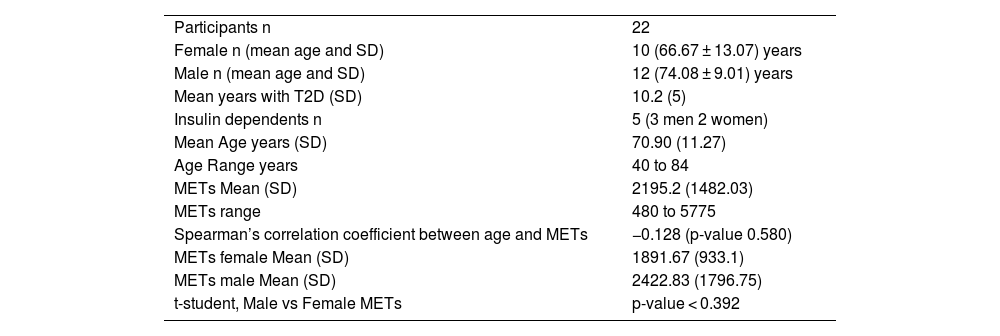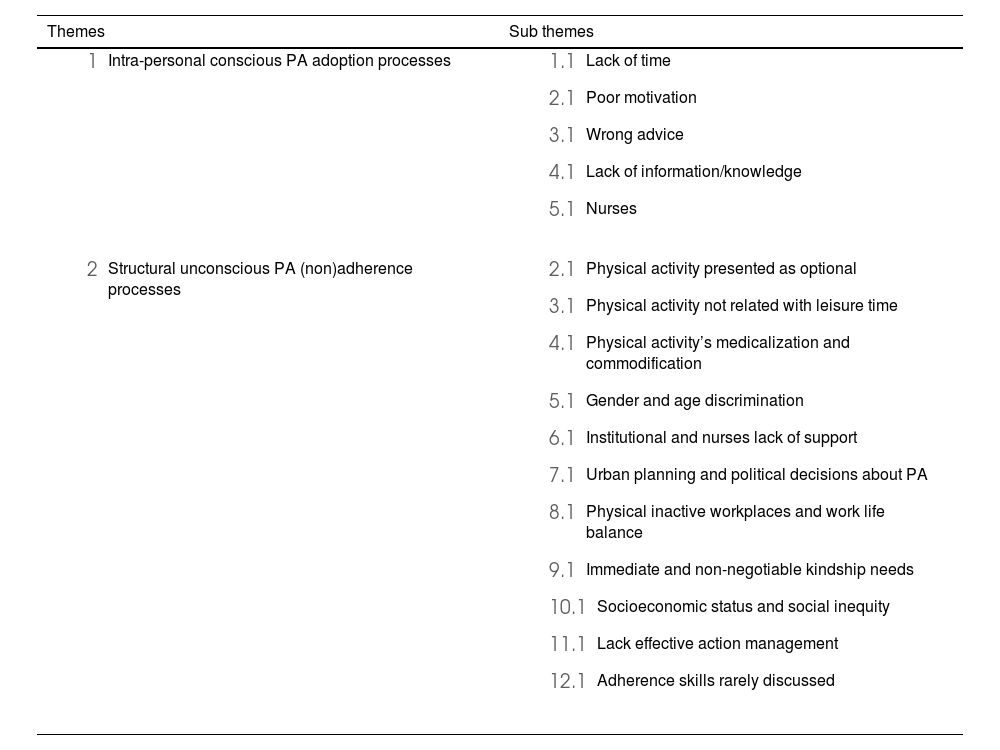Although physical activity (PA) is a key behaviour for controlling Type 2 Diabetes, problematic adoption and/or adherence continues to impair disease management. This study aims to understand how patients with T2D live and experience nurses PA promotion during consultations in Spanish context.
MethodThe present study is a qualitative research. In 2019–2020, pre-COVID-19, Twenty-two people living with T2D from Barcelona province contributed either to focus groups (n = 5) or to semi-structured interviews (n = 4). All interviews were recorded, transcribed, and analysed using conventional content analysis approach through constant comparative method.
ResultsData analysis revealed two major themes with sixteen subthemes. The two major themes include: “Intra-personal conscious PA adoption processes” and “Structural unconscious PA (non)adherence processes”.
ConclusionPatients’ experiences reflect two concurrent and interconnected issues. First, most patients readily adopted new PA after encouragement from nurses, who were the main proponents of PA. Indeed, adoption seemed to be most nurses’ PA priority and it was effective for most patients. Second, few nurses discussed adherence, making it an almost universal problem and source of disappointment. For adherence, patients experience that nurses’ attention needs to focus on activating processes and skills that support continued involvement in already-adopted PA.
Aunque la actividad física (AF) es un comportamiento clave para el control de la diabetes tipo 2 (DT2), los problemas de adopción-adherencia a la AF dificultan el manejo de la enfermedad. Este estudio tiene como objetivo entender cómo los pacientes con DT2 experimentan la promoción de la AF durante las consultas de enfermería en un contexto español.
MétodosEl presente estudio es de metodología cualitativa. Entre 2019–2020, en pre-COVID-19, veintidós pacientes con DT2 de la provincia de Barcelona participaron en cinco grupos focales y/o cuatro entrevistas semiestructuradas. Todas las reuniones fueren registradas, transcritas y analizadas usando el enfoque de análisis de contenido convencional a través del método comparativo constante.
ResultadosEl análisis de datos reveló dos temas principales con dieciséis subtemas. Los dos temas principales fueron: “Procesos conscientes intrapersonales de adopción de la AF” y “Procesos inconscientes estructurales de (no) adherencia a la AF”.
ConclusiónLa experiencia de los pacientes refleja dos problemas concurrentes e interconectados. En primer lugar, la mayoría de los pacientes adoptan rápidamente la AF después del apoyo de los/las enfermeros/as, los cuales fueron los principales promotores de la AF. En efecto, según los pacientes, la adopción de la AF parece ser la prioridad de la mayoría de los/las enfermeros/as. En segundo lugar, los pacientes perciben que pocos enfermeros/as dedican tiempo a la adherencia, lo que la convierte en un problema casi universal y una fuente de decepción para el paciente. Para la adherencia, los pacientes experimentan que la atención de los/las enfermeros/as debe centrarse en la activación de procesos y habilidades que apoyen la participación continua en la AF ya adoptada.










